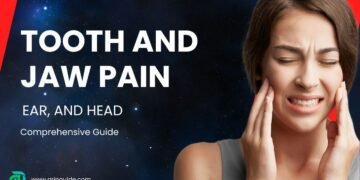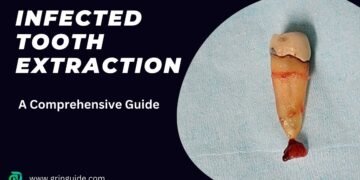Table of Contents
Introduction
Water flossers are oral health devices that use a stream of pulsating water to clean between the teeth and along the gumline. The water pressure can be adjusted to suit individual comfort levels, making it a versatile tool for interdental cleaning.
They are an effective alternative to traditional string floss and are particularly beneficial for individuals with braces, dental implants, or those who struggle with manual dexterity.
Brief History and Evolution of Water Flossers
The concept of water flossing can be traced back to the early 1960s when a dentist, Dr. Gerald Moyer, and an engineer, John Mattingly, collaborated to develop the first oral irrigator.
Over the years, advancements in technology and design have led to the creation of more sophisticated and user-friendly water flossers.
Today, water flossers are available in a variety of models, ranging from countertop units to cordless devices, each offering unique features to cater to different oral care needs.
Importance of Interdental Cleaning
Interdental cleaning, which involves cleaning between the teeth, is a crucial aspect of oral hygiene. Traditional brushing alone is not sufficient to remove plaque and food particles from these hard-to-reach areas.
Neglecting interdental cleaning can lead to the accumulation of plaque, increasing the risk of tooth decay, gum disease, and bad breath.
Water flossers provide an effective means of interdental cleaning, complementing regular brushing to maintain optimal oral health.
The Science Behind Water Flossing
The science behind water flossing lies in the principles of fluid dynamics and the mechanical disruption of plaque biofilm. The pulsating water stream dislodges and flushes away plaque, debris, and bacteria from the teeth and gums, promoting a cleaner and healthier oral environment.
Furthermore, the massaging action of the water jet can stimulate blood flow in the gums, contributing to improved gum health over time.
How Water Flossers Work
Water flossers typically consist of a water reservoir, a motor or pump, and a handheld wand with a nozzle. When the device is powered on, the motor or pump pressurizes the water from the reservoir and delivers it through the nozzle in controlled pulses.
Users can adjust the water pressure settings to their preference, ensuring a comfortable and effective cleaning experience.
The pulsating water jet can reach deep into interdental spaces and below the gumline, effectively removing debris and stimulating the gum tissue.
The Effectiveness of Water Flossing in Plaque Removal and Gum Health
Research has shown that water flossers are highly effective in reducing plaque and improving gum health. A study published in the Journal of Clinical Dentistry demonstrated that water flossing was 29% more effective than string flossing in plaque removal.
Additionally, another study in the Journal of Clinical Periodontology found that water flossing was associated with a significant reduction in gingivitis and gum bleeding.
These findings highlight the valuable role of water flossers in promoting oral cleanliness and gum wellness.
Comparison with Traditional String Floss
When comparing water flossers with traditional string floss, several advantages become apparent. Unlike string floss, water flossers are gentle on the gums and less likely to cause irritation or discomfort. They are also easier to use for individuals with limited dexterity or orthodontic appliances.
Furthermore, water flossers offer a more thorough and comprehensive cleaning experience, reaching areas that may be challenging to access with string floss alone.
Benefits of Using Water Flossers
Using water flossers as part of a daily oral care routine offers a multitude of benefits, including:
1. Improved Oral Hygiene for People with Braces or Dental Implants
Water flossers are particularly advantageous for individuals with braces or dental implants, as these dental appliances can create obstacles for traditional flossing.
The pulsating water stream can effectively clean around brackets, wires, and implants, reducing the risk of plaque accumulation and gum irritation.
2. Reduction in Gingivitis and Gum Disease
Regular use of water flossers has been linked to a decrease in gingivitis and gum disease. By effectively removing plaque and debris, water flossers help maintain the health of the gums and prevent inflammation and infection.
3. Convenience and Ease of Use
Water flossers offer a convenient and user-friendly alternative to traditional floss. The adjustable water pressure settings cater to individual preferences, and the process is generally less cumbersome than using string floss, making it easier for individuals to maintain consistent interdental cleaning habits.
Types of Water Flossers

Water flossers are available in several variations, each designed to accommodate different preferences and lifestyles. The main types of water flossers include:
1.Countertop Water Flossers
Countertop water flossers are stationary devices that are typically placed on a bathroom counter or vanity. These models offer a more powerful and consistent water pressure, making them suitable for thorough and effective interdental cleaning. Countertop flossers often feature larger water reservoirs, allowing for extended usage without the need for frequent refilling.
Countertop water flossers are ideal for individuals with a dedicated space in their bathroom and who prefer a more robust cleaning experience. They are frequently used in households with multiple members, as the larger size and stationary nature make them suitable for shared use.
2.Cordless/Portable Water Flossers
Cordless or portable water flossers are compact and battery-powered devices that offer greater flexibility and mobility. These models are designed for users who value convenience and portability, as they can be easily transported and used in various locations, such as while traveling or at the office.
Cordless water flossers typically have smaller water reservoirs compared to countertop models, but they still provide effective interdental cleaning. They are particularly suitable for individuals who need a more discreet and versatile option for their oral hygiene routine.
3. Water Flossers with Specialized Tips for Different Needs
Some water flossers come with specialized tips to address specific oral care needs. These may include orthodontic tips for cleaning around braces, periodontal tips for targeting gum pockets, and plaque-seeking tips with built-in indicators to highlight areas that require attention.
By offering diverse options, water flossers cater to a wide range of preferences and oral health requirements, empowering individuals to customize their interdental cleaning experience.
a. Orthodontic Tips
Water flossers with orthodontic tips are designed to effectively clean around and between braces, brackets, and wires. These specialized tips feature a smaller, more precise nozzle that can reach tight spaces and properly clean around orthodontic appliances.
Individuals wearing braces or other fixed dental devices can greatly benefit from the use of water flossers with orthodontic tips, as they provide a more thorough and targeted cleaning solution compared to traditional floss or brushing alone.
b. Periodontal Tips
Periodontal tips, also known as “pockets tips,” are designed to target and clean the deeper spaces between the teeth and along the gumline.
These specialized tips have a slender, angled nozzle that can reach into periodontal pockets, which are the small spaces between the teeth and gums that can harbor plaque, bacteria, and food debris.
Water flossers with periodontal tips are particularly beneficial for individuals with gum disease or those who require more specialized interdental cleaning to maintain optimal oral health.
c. Plaque Seeker Tips
Plaque seeker tips are designed to effectively remove plaque and stubborn deposits from the teeth and along the gumline. These tips feature a specialized, concentrated water stream that can target and dislodge hardened plaque buildup.
Water flossers with plaque seeker tips are ideal for individuals who struggle with persistent plaque accumulation or who have not been able to effectively remove plaque through traditional brushing and flossing methods.
How to Use a Water Flosser
Using a water flosser is relatively straightforward, but it’s essential to follow the correct steps for optimal results. Here’s a step-by-step guide on how to use a water flosser:
Step 1: Fill the Reservoir
Fill the reservoir of the water flosser with lukewarm water. Some models may allow the addition of mouthwash for an extra-fresh feeling.
Step 2: Select the Appropriate Tip
Choose the flossing tip that best suits your needs. For general use, a standard flossing tip is adequate, while specialized tips are available for specific dental requirements.
Step 3: Adjust the Pressure Settings
Adjust the pressure settings based on your comfort and requirements. Beginners or individuals with sensitive gums may start with a lower pressure setting and gradually increase as they become accustomed to the sensation.
Step 4: Flossing Technique
Lean over the sink and place the tip of the water flosser in your mouth. Close your lips enough to prevent splashing, but allow water to flow freely from your mouth into the sink. Aim the tip at the gumline at a 90-degree angle and follow the natural curves of your teeth, ensuring to floss the front and back of each tooth thoroughly.
Step 5: Clean the Water Flosser
After use, empty the reservoir and run the water flosser with plain water to clean out any remaining debris. Remove the flossing tip and let the unit air dry before the next use.
Tips for Effective Water Flossing
To make the most out of your water flosser and ensure optimal oral hygiene, consider the following tips for effective water flossing:
Consistency is Key
Make water flossing a part of your daily oral care routine. Consistent and thorough flossing can significantly contribute to healthier gums and cleaner teeth.
Follow Proper Technique
Ensure that you are directing the water stream along the gumline and between the teeth, covering all areas of the mouth for comprehensive cleaning.
Use the Right Tip
Choose the appropriate flossing tip based on your specific needs, whether it’s for general use, orthodontic care, or gum health. Using the right tip can maximize the effectiveness of the water flosser.
Factors to Consider When Choosing a Water Flosser
When selecting a water flosser, there are several factors to consider ensuring the device aligns with your specific oral care needs and preferences:
Water Pressure Adjustment
The ability to adjust the water pressure is a crucial feature, as it allows users to customize the cleaning experience to their comfort level.
Some individuals may prefer a gentler water pressure, while others may want a more powerful jet stream. Adjustable water pressure settings cater to different user needs and sensitivity levels.
Water Reservoir Capacity
The size of the water reservoir can impact the duration of use before needing to refill. Larger reservoirs are often found in countertop models, allowing for extended cleaning sessions without interruption.
Portable or cordless flossers may have smaller reservoirs, but they offer the convenience of mobility.
Tip Variety
The availability of different tip options, such as orthodontic, periodontal, and plaque seeker tips, can enhance the versatility and effectiveness of a water flosser.
Users with specific oral care needs may benefit from a model that offers a range of specialized tips to address their unique requirements.
Noise Level
Some individuals may prefer a quieter water flosser, especially if the device will be used in shared living spaces or during quiet hours.
Manufacturers often prioritize noise reduction in their product designs, offering models with reduced sound output for a more discreet and peaceful cleaning experience.
Portability and Battery Life
For individuals who value mobility and convenience, a cordless or portable water flosser with a long-lasting battery life can be a practical choice. These models allow for easy transportation and use in various locations, such as during travel or at the office.
Maintenance and Cleaning of Water Flossers
Proper maintenance and cleaning of water flossers are essential to ensure the device’s longevity and optimal performance. Here are some tips for maintaining Electric Water Jet Flossers:
Cleaning the Water Reservoir
The water reservoir should be cleaned regularly to prevent the buildup of mineral deposits, bacteria, or other contaminants. This can typically be done by running a vinegar or water-based cleaning solution through the reservoir, followed by a thorough rinse with clean water.
Disinfecting the Flosser Tip
The flosser tip, which comes into direct contact with the mouth, should be disinfected after each use. This can be accomplished by soaking the tip in a diluted bleach solution or using a specialized cleaning tablet designed for water flossers.
Replacing the Flosser Tip
Flosser tips should be replaced periodically, as recommended by the manufacturer, usually every 3-6 months or as needed. Worn or damaged tips may not provide the same level of cleaning effectiveness and can potentially harbor bacteria.
Storing the Water Flosser
When not in use, the water flosser should be stored in a clean, dry location. Leaving the device in a humid environment or with water remaining in the reservoir can lead to the growth of mold or bacteria, compromising the device’s performance and hygiene.
Troubleshooting and Maintenance
If the water flosser encounters any issues, such as reduced water pressure or clogging, it’s important to consult the manufacturer’s instructions for troubleshooting and maintenance guidelines.
Attempting to disassemble or repair the device without proper guidance may result in damage or voiding the warranty.
The Future of Water Flossers
As technology continues to advance, the future of Electric Water Jet Flossers holds promising developments. Manufacturers are constantly exploring ways to enhance the performance, convenience, and user experience of these oral hygiene devices.
Increased Connectivity and Smart Features
The integration of smart technology into Electric Water Jet Flossers is an emerging trend. Future models may feature Bluetooth connectivity, allowing users to track their usage, monitor their oral health data, and receive personalized recommendations through compatible mobile applications.
Additionally, Electric Water Jet Flossers with built-in sensors could detect gum health, plaque levels, or even provide real-time feedback on the effectiveness of the cleaning process, empowering users to improve their oral hygiene routines.
Advancements in Water Pressure and Ergonomics
Manufacturers are continuously working on improving the water pressure and delivery system of Electric Water Jet Flossers. Future models may incorporate advanced pumps, nozzle designs, and water-flow optimization to provide a more effective and comfortable cleaning experience.
Additionally, ergonomic enhancements, such as lightweight, ergonomic handles and improved grip designs, can enhance the overall user experience and make water flossing more accessible to a wider range of individuals.
Sustainable and Eco-friendly Innovations
As environmental consciousness grows, Electric Water Jet Flossers manufacturers are exploring ways to incorporate sustainable and eco-friendly features into their products. This may include the use of recycled materials, reduced water consumption, and energy-efficient motors or power sources.
These advancements in sustainability can contribute to a more environmentally responsible oral hygiene routine, aligning with the increasing demand for greener consumer products.
Potential Drawbacks and Considerations
While Electric Water Jet Flossers offer numerous benefits, there are some potential drawbacks and considerations to keep in mind:
Initial Discomfort
Some individuals may experience initial discomfort or sensitivity when using an Electric Water Jet Flossers, especially if they are new to the device or using a higher pressure setting. It’s essential to start with a lower pressure and gradually increase as you become more accustomed to the sensation.
Requires Maintenance
Compared to traditional flossing, water flossers require regular maintenance, including cleaning the unit and replacing flossing tips. This additional upkeep should be considered when incorporating an Electric Water Jet Flossers into your oral care routine.
Situations Where Water Flossers May Not Be Suitable
While Electric Water Jet Flossers are beneficial for most individuals, there are certain situations where they may not be the most suitable option:
Young Children
Young children may not be able to use a water flosser effectively on their own. However, there are specialized Electric Water Jet Flossers designed for children that can be used under adult supervision.
Specific Dental Conditions
Individuals with specific dental conditions or recent oral surgery should consult their dentist before using an Electric Water Jet Flossers, as it may not be suitable during the healing process or for certain oral health concerns.
Common Misconceptions and How to Address Them
There are some common misconceptions surrounding water flossers that can be addressed to provide a clearer understanding of their effectiveness and usage:
Water Flossers Replace Traditional Flossing
While water flossers are highly effective at removing plaque and debris, they are not a complete substitute for traditional flossing. Dental professionals recommend using both water flosser and traditional floss for comprehensive oral hygiene.
Water Flossers Are Only for Gum Health
While water flosser is beneficial for gum health, it also effectively cleans between teeth and along the gumline, promoting overall oral hygiene and preventing cavities.
By considering these factors, features, and recommendations, you can confidently choose the right Electric Water Jet Flossers to enhance your oral care routine and achieve optimal dental health.
Conclusion
Electric Water Jet Flossers have emerged as a highly effective and convenient tool for maintaining optimal oral health. By providing a thorough and targeted cleaning of the interdental spaces, water flosser can significantly contribute to the reduction of plaque, gingivitis, and the overall improvement of gum health.
As technology continues to evolve, the future of Electric Water Jet Flossers promises even greater advancements in performance, user experience, and sustainable design.
Incorporating Electric Water Jet Flossers into daily oral hygiene routines can be a valuable addition for individuals seeking to enhance their dental care and achieve a healthier, more radiant smile.
FAQs
-
Do dentists actually recommend water flossers?
Yes, Regular use of Electric Water Jet Flossers has been linked to a decrease in gingivitis and gum disease. By effectively removing plaque and debris, they help maintain the health of the gums and prevent inflammation and infection.
-
Are Water Flossers good for your teeth?
Electric Water Jet Flossers are beneficial for your teeth as they can remove debris and plaque that brushing and flossing might miss, helping to prevent gum disease and tooth decay.
-
Do water flossers really work?
actually yes, Electric Water Jet Flossers do work. They help in removing plaque and food particles that brushing and traditional flossing may miss.
-
What is the best water flosser?
The best water flosser can vary based on individual needs and preferences. However, models like the Waterpik Ion and Philips Sonicare Power Flosser 3000 Cordless have been highly recommended by experts for their effectiveness, ease of use, and features.











